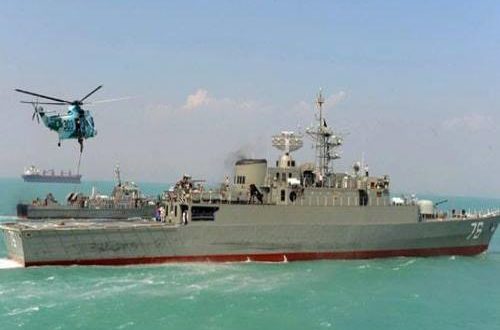Svi Megan
Tensions in the Persian Gulf are growing significantly, mostly due to the effective sanctions mechanism that Washington is using against Iran. These restrictions have already caused significant problems for Tehran, since it has no way to bypass the American pressure. As a result, Iran is trying to stir up an international crisis as a lever to stop the American pressure. This has taken the form of an escalating threat to attack various sensitive targets in the Middle East, including US forces.
In fact, Iran has already started, at least allegedly, to go ahead with this plan. Iran has recently been accused of being behind a string of incidents. These included the alleged sabotage of oil tankers off the coast of the United Arab Emirates and a rocket that landed in Baghdad, while Yemen’s Houthi-aligned rebels have launched drone attacks directly against Saudi Arabia.
However, it seems that rhetoric aside, the Iranian leadership understands that if the US eventually attacks Iran, Teheran will only be able to respond through the use of terror attacks, such as limited shootings and guerrilla hits on US ships and facilities located in the Persian Gulf, as well as attacks on US allies in the Middle East.
On the other hand, the ability of the US armed forces to carry out a comprehensive military operation within Iran itself is limited as well. The US forces stationed in the region aren’t sufficient to fight a ground war, even if President Trump’s planned contingent of 120 thousand additional troops arrives. However, the American army will be able to realise some local operational activities in certain places in Iran and in the Gulf region. It seems that Americans would limit themselves mainly to air and sea strikes. In this capacity, the American military forces are well-prepared to attack a significant number of targets around and within Iran itself, which could cause an enormous amount of damage to Iranian facilities and infrastructure. In that context, the US Department of Defense is considering sending about 5,000 – 10,000 troops to the Middle East.
It seems reasonable that in the event of a “hot” conflict with the US, the Iranians will not hesitate to deliver strikes against US military ships and facilities located in the Persian Gulf, as well as against US allies in the Middle East, including Israel. Iran has already attacked Israel through the hands of Hamas and the Islamic Jihad in Gaza, in early May. In his recent speech, Nasrallah, the leader of the Iran-backed Lebanese Hezbollah militia, directly threatened to attack Israel, in case Iran was attacked by the US. Therefore, the next phase of a “hot” warfare could include significant missile attacks on Israeli territory by Hezbollah in Lebanon, done with the purpose of influencing the results of Iran’s conflict with the US. However, it looks certain that all such activity will be in vain, given Israel’s exceptional military capabilities.
One can reasonably assume that all other regional actors which aren’t directly attacked by the Iranians, like Turkey, will refrain from involvement in this crisis.
The same could be said about Russia’s likely reaction, in the event of a “hot” confrontation. Certainly, Russia will not be able to ignore such a conflict with Iran, as its ally, but it seems that it would prefer to mainly limit its reaction to the level of rhetoric. It’s especially worth mentioning a chilling in Russia – Iran relations, especially regarding the future resolution of the Syrian crisis. What’s more, it seems that Russia and the US have recently found some common ground regarding their attitude toward Iran.
We believe a military clash between the US and Iran is not likely to happen, because, on one hand, Iran lacks the power and resources to pose a real threat to the US. On the other hand, the US isn’t really pursuing a full-scale military conflict. As a result, under these circumstances, it seems that in spite of all the loud statements and threats that Iran has made towards the US, when it will come to a crucial moment, Iran will eventually agree to all of the terms of the US.
 Geostrategic Media Political Commentary, Analysis, Security, Defense
Geostrategic Media Political Commentary, Analysis, Security, Defense





